After more than 2 years of a mixture of working remotely and seeing some returns to the office, the vision of the future workspace has changed. At Yulio we know one thing is for sure - the workplace cannot and should not be the same after this period of remote work.
"The world of work cannot and should not look the same after this crisis"
- Antonio Guterres, Ninth Secretary-General of the United Nations
Businesses started exploring and implementing elements of the hybrid workplace over the past year or so to reintroduce their employees. We’ve seen this happen in both big and small organizations. We wrote a post that goes further in-depth addressing some of the biggest barriers this new work model posed for remote client collaboration and ways to combat these challenges.
Many professionals are questioning and feeling apprehensive as to what the workplace will look like and what they will need to do in order to get ready for this working environment.
Let’s take a look into some of the themes and designs that have come out about hybrid workspaces and take a look at how some organizations have already put their experiments into place. We will also talk about how you can best set yourself up for success in navigating the hybrid workplace.
The Hybrid Workplace Imagined
A team of architects and workplace designers at Gensler came together to sketch out a few versions of how they envisioned the post-pandemic workplace would be and how it will function. Here are just a few of their designs -
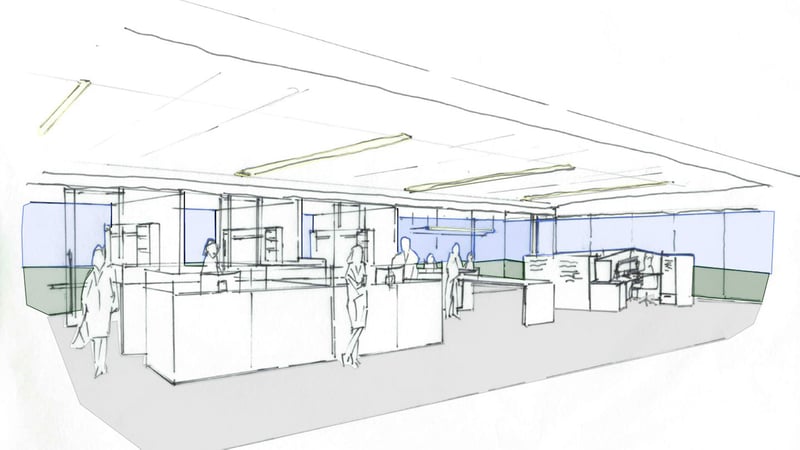
“A radical change in flexibility” Sketch by John Harrison, design director, Gensler Houston
Flexibility and accommodation is a common theme among all of the sketches. And as Design Director from Gensler Houston, John Harrison observes, “People’s behavioral habits are going to be different, and the physical office must accommodate that in a forward-thinking, creative way”. For over two years, professionals have had to create their own work routines and practices to help them stay productive while accommodating their new remote work environment. With many having gotten used to a level of flexibility, workplaces will shift and create solutions that incorporate and encourage a radically adaptive space.
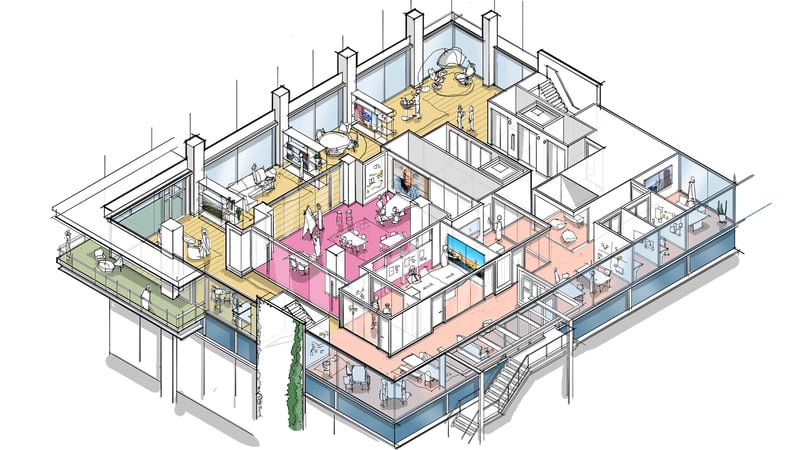
“Employee choice at the core” Sketch by Lucas Roberts, studio director, Gensler Atlanta
It may have been a while since we have seen our colleagues on a regular basis. The sketch from Gensler Atlanta features a space that will give full agency to the employee to head into spaces from a variety of entry points. Studio Director Lucas Roberts describes the importance of multiple entries to “enable employees to define their purpose for visiting the office and then choose to enter where they will interact with others, or head straight for their assigned desk or meeting space”. By giving the power to the employee to choose and splitting up spaces by zones, the individual can control how much or how little interaction they would prefer
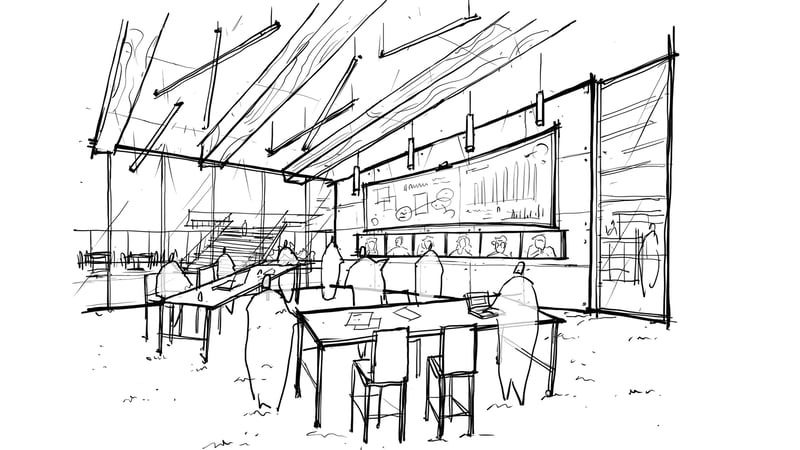
“The workplace as an intimate social hub” Sketch by Bonan Sun, designer, Gensler New York
As discussed in a previous post on our blog, Bonan Sun, designer at Gensler New York, foresees the blended workforce as the new normal. While their sketch centers around a communal social-hub-like space, at its core, technology will continue to be an irreplaceable platform that will connect both teams together and firms with their clients. Plus, as we start to slowly inch away from the everyday Zoom meetings, “digital tools will allow for human interaction in a way that video conference calls and Zoom fatigue could not”.
We’re excited to see how advanced digital tools such as virtual reality can continue to support firms in collaborating remotely internally and with clients. In fact, as offices have started to set up their hybrid offices, we’ve started to see some extremely interesting uses of tech and the ideas outlined in these sketches come to life.
The Hybrid Workplace comes to life
When these sketches were created, they were ideas to be considered by employers. However, now that many companies are in full swing of implementing some form of the hybrid workplace, we can see just how the themes and ideas here are playing large roles in designs. Flexibility and the ability to choose where you want to work and interact with coworkers are key design choices in today’s living and breathing designs.
LinkedIn Going All-in on the Hybrid design
LinkedIn had big plans for its campus in Silicon Valley. However, the pandemic obviously made them reconsider how to layout their new office. Back in 2021, they revealed their plans for a new hybrid workplace model that would feature several new designs of workspaces as well as a reduction in the number of workstations.
They came up with some of the following terms in their workspace:
- Neighborhoods – a cluster of workstations dedicated to a team. These include a mixture of classic workstations or some meant for flex workers how are only in for short periods of time
- Meeting spaces – instead of just conference rooms, more open spaces for casual meetings in the office with coworkers both remote and in-person
- Flex zones – Areas that are meant for temporary use by a team and are easily changeable from week to week. Great for brainstorming
- Deep Focus areas – quiet zones meant for you to put your head down and get to work
- Cafes – A change in the usual lunchroom or cafeteria. Offer a space that can be for lunch, but also still some casual meetings and breaks throughout the day.
A mockup of a “Flex Zone” in LinkedIn’s hybrid workspace. Photo credit: LinkedIn.com business blog
These changes were exciting when first revealed and now they have come to life. The video below from the Wall Street Journal does a great job covering the many changes in the office design. They also highlight how specific types of furniture are considered for each zone based on the amount of time people are working in the office.
It’s also worth noting that LinkedIn has considered the tech side of things and has taken into consideration people working from home and joining meetings remotely. They have set up specific meeting spaces that offer tech that makes it easier for them to feel a part of the meeting and allows them to more easily participate.
Gensler’s New Hybrid Office in Miami
Gensler, who made the sketches earlier in this article has also brought to life a fully hybrid office in Miami. It shares a lot of similarities with LinkedIn’s model but on a slightly smaller scale. We think it’s a great example of how an organization of any size can consider the hybrid model.
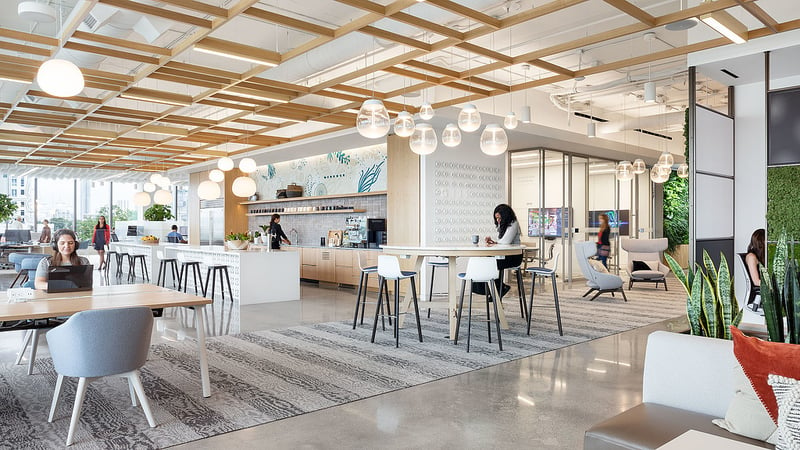
Gensler’s Miami office. Photo credit: Gensler.com
While there isn’t such an emphasis on creating different “zones” there was a priority on equality across work modes. They want both in-office and remote workers to continue working with each other and have considered creating spaces that make that as easy as possible. This includes having spaces that account for sound, light, and privacy.
Their design also is extremely flexible and as they move forward, they are working with employees to get feedback and make changes to the office space. This could be adding more workstations or meeting spaces. It captures a lot of ideas highlighted in their original sketches.
3 Essential Steps to Navigate the Hybrid Workplace
Take the Time to Organize
Beyond wrapping up cables and loading up your monitors, take the time to organize your files. Especially those you have created and accumulated during this remote work period. Take this opportunity to do some spring cleaning and organization. Getting everything prepped and ready to go before heading into this brand new work environment will be helpful in staying productive and making sure you’re ready to tackle the back and forth of heading to the office and working from home.
One tool that would be really useful for hybrid workspaces is to utilize cloud storage platforms like Google Drive or our Yulio platform if you have any VR projects. This gives you greater flexibility in accessing your files from any device and ensures you will always have what you need regardless of location.
Keep Using your Remote Platforms
This will be key especially in a time where everyone is transitioning into this new business model. Many of your clients will be in the same boat as you, juggling a brand new work schedule that has them in the office some of the days and working from home the other. So make the most out of the remote platforms you already have grown familiar with and accustomed to staying connected with your clients at any time.
I believe we will emerge with a blended workforce where some people will work from home, some will work in the office on certain days, and then many will transition back and forth between the two. As a result, technology will continue to be a huge pillar in our post-COVID-19 workplaces and even further impact how we work and learn.”
- John Harrison, Design Director, Gensler Houston
If you’re already a Yulio user, you’re set for any remote presentation or meeting with your clients. We have always designed our platform to empower our users to pitch to clients in person or to showcase their VR projects remotely. Plus, it wasn’t too long ago that we released a number of features like our Yulio LiveChat integration that ensures you will never miss out on connecting and interacting with your clients. Utilize our remote mobile platform to impress and collaborate with clients in front of you or on your Zoom call.
Get Ready to Communicate
Being able to experience and collaborate equally will continue to be a challenge when half of your team may be scheduled to work from home while the other half is in the office. And while booking a conference room makes collaborating exceptionally easier, it is crucial to start strong by staying connected with the whole team.
Start off with having a conversation with your team on how to stay connected. This may look like continuing with avenues you’re already using, weekly 1-on-1 check-ups or exploring brand new platforms that can encourage greater understanding and transparency. And, especially if you’re on our Yulio platform, you can simply include a note in your project as to any updates or details that came up from a team meeting by using a Text Hotspot to include a note.
It’s Time to Get Ready
While working remotely was famously coined as the “new normal”, the hybrid workplace is a strong contender to steal its throne. A plethora of business giants like Twitter, Quora, and Shopify have created the option for employees to permanently work from home, influencing the historic shift in the world of work. And when it's safe to gather in person, some businesses like Dropbox which currently offer fully remote positions are looking to launch collaborative spaces to give teams a place to come together and collaborate in person.
So perhaps you may still be asking, is the hybrid workplace here to stay? In short, yes. And it’s time to get ready
Looking for a platform that can help you share your visual story in person and remotely? Get full access to our Yulio platform for 30 days with our free trial - sign up and start presenting better with the power of VR. For more information on how to get started, head over to our Yulio Learning Portal to see what you can achieve with Yulio.
Updated August 18, 2021





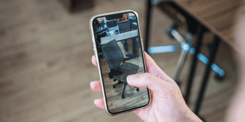
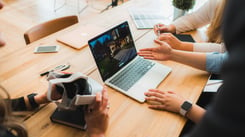
.jpg?width=245&height=150&name=iStock_88161583_XLARGE%20(1).jpg)
